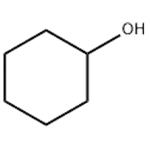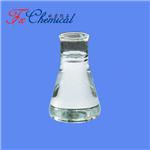Cyclohexanol: Versatile Applications in Different Fields and its Production Method
May 24,2024
General Description
Cyclohexanol, a secondary alcohol derived from cyclohexane, is a versatile compound with unique physical and chemical properties. It serves as a crucial intermediate in the production of various chemicals, including Nylon-6, and finds extensive use in industries such as textiles and automotive manufacturing. With its solvent properties, cyclohexanol is valuable for dissolving substances like lacquers and paints. The industrial production of cyclohexanol involves oxidizing cyclohexane with a catalyst, followed by fractional distillation to separate the desired product. Overall, cyclohexanol's significance lies in its role as an intermediate compound and solvent, enabling the creation of essential materials and facilitating industrial processes.

Figure 1. Cyclohexanol
Overview
Cyclohexanol is a secondary alcohol with the chemical formula C6H11OH. It is derived from cyclohexane and features a distinct, camphor-like odor. This versatile compound is widely used in various industrial applications due to its unique physical and chemical properties. Cyclohexanol is a viscous liquid that has a relatively high melting point (25.93°C) and boiling point (161°C). Its polarity, which is attributed to the presence of a hydroxyl (-OH) group, makes it capable of forming hydrogen bonds. This trait affects its solubility, making it soluble in common organic solvents such as ethanol, acetone, and diethyl ether but sparingly soluble in water. Cyclohexanol's polarity also makes it an excellent solvent for polar compounds. Moreover, this alcohol can undergo various chemical reactions such as oxidation, reduction, and esterification, resulting in a wide array of derivatives. These derivatives play critical roles in manufacturing various chemicals, including solvents, plastics, and pharmaceuticals. In addition, Cyclohexanol serves as an essential intermediate in the production of caprolactam, a raw material for the manufacture of Nylon-6, a widely used synthetic fiber. 1
Versatile Applications in Different Fields
Cyclohexanol is a versatile compound with various applications. Firstly, it is widely used as a chemical intermediate in the synthesis of other chemicals. One of its main uses is in the production of adipic acid and caprolactam, which are essential precursors for manufacturing Nylon-6,6 and Nylon-6, respectively. These types of nylon find extensive use in industries such as textiles and automotive manufacturing. Additionally, cyclohexanol possesses solvent properties that make it valuable in industrial applications. Its polarity and ability to form hydrogen bonds make it an effective solvent for lacquers, resins, oil-based paints, and cellulose esters. The solvent properties of cyclohexanol enable it to dissolve or disperse various substances, facilitating processes like coating and surface treatment. The role of cyclohexanol in the synthesis of important materials cannot be understated. By serving as a precursor in the production of nylon, it enables the creation of durable and versatile materials that have numerous industrial applications. Furthermore, its function as a solvent contributes to the formulation of various coatings and paints, enhancing their effectiveness and versatility. It is worth noting that the applications of cyclohexanol extend beyond those mentioned here, as it is a highly versatile compound with diverse uses in the field of chemistry. Its significance lies in its ability to serve as an intermediate compound and solvent, enabling the production of vital materials and facilitating various industrial processes. 2
Production Method
Cyclohexanol is commonly manufactured on an industrial scale via the oxidation of cyclohexane, a process that involves the use of an oxidation catalyst in the presence of air. Typically, a combination of cobalt and manganese salts serves as the catalyst for this reaction. The resulting product is a mixture of cyclohexanol and cyclohexanone, collectively referred to as "KA oil". To separate the cyclohexanol from the cyclohexanone, fractional distillation is employed, taking advantage of the difference in their boiling points. The production process begins with the introduction of cyclohexane and the oxidation catalyst into a reactor, followed by the addition of air. Under controlled conditions, the oxidation of cyclohexane occurs, leading to the formation of the desired products. Subsequently, the mixture is subjected to fractional distillation, a process in which the components are separated based on their varying boiling points. Cyclohexanol, with its lower boiling point compared to cyclohexanone, can be effectively isolated and collected as the desired end product. 2
Reference
1. Cyclohexanol. National Center for Biotechnology Information. 2024; PubChem Compound Summary for CID 7966.
2. Cyclohexanol. Material Properties. https://material-properties.org/cyclohexanol/
- Related articles
- Related Qustion
- The manufacture of cyclohexanol May 25, 2022
Cyclohexanol [108-93-0] is a colorless, viscous liquid with a camphoraceous odor.
Supplementation with pyridoxal 5'-phosphate monohydrate can synthesize neurotransmitters such as dopamine and serotonin, maintaining a healthy nervous system.....
Nov 4,2025Biochemical EngineeringUracil is one of the four nucleotide bases in the nucleic acid RNA. In RNA, uracil binds to adenine via two hydrogen bonds.....
Oct 29,2024Biochemical EngineeringCyclohexanol
108-93-0You may like
- Cyclohexanol
-

- 2025-12-13
- CAS:108-93-0
- Min. Order:
- Purity: 0.99
- Supply Ability:
- Cyclohexanol
-

- $0.00 / 185KG
- 2025-12-13
- CAS:108-93-0
- Min. Order: 185KG
- Purity: 98%min
- Supply Ability: 30tons/month
- Cyclohexanol
-

- $2.80 / 200kg
- 2025-12-12
- CAS:108-93-0
- Min. Order: 1000kg
- Purity: ≥99.5% (Pharmaceutical Grade) / ≥99.0% (Industrial Grade)
- Supply Ability: 100 tons






